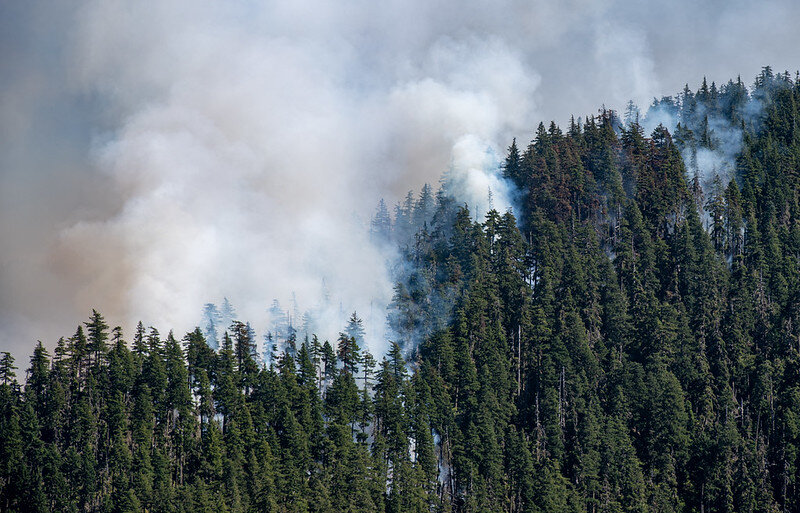June 2021 Science Corner | “Climate, wildfire, and erosion ensemble foretells more sediment in western USA watersheds”


With wildfires becoming more extreme, sedimentation impacts are also becoming more pronounced. But by how much? And in which watersheds? Those are the questions that Dr. Joel Sankey and his team set out to answer in their study published in the journal, Geophysical Research Letters.
Authors: Joel B. Sankey, Erich R. Mueller, Jason Kreitler, Todd J. Hawbaker, Nicole M. Vaillant, Scott E. Lowe, Jason L. McVay, Mary Ellen Miller, and Temuulen T. Sankey
Interview and story by: Kim Quesnel, PhD
It feels like every year is the worst wildfire season on record, a perception now backed by scientific research. As communities and ecosystems are devastated by the increasing severity, length, and extent of fire season, the water sector is also feeling the impacts. Why do wildfires matter for water resources? Because, in the Western US, over 65% of water supply originates in forests, and resilient forests mean clean, safe water. These forests provide natural infrastructure for water supply systems across the country.
In addition, wildfires can damage built infrastructure, for example causing chemicals to leach as plastic pipes melt and contaminate drinking water. However, most of the impact happens after the fire is extinguished. “Combustion of overlying vegetation causes water to go from rainfall to runoff faster and in larger quantities, and along the way increases sedimentation in streams, rivers and reservoirs,” Dr. Joel Sankey of the USGS explains. More sediment means degraded water quality, negative impacts to aquatic habitat, as sediment covers spawning habitat, and sometimes high costs to downstream utilities. After severe wildfires in 1996 and 2002, Denver Water spent $26 million to dredge 1 million cubic meters of sediment from a reservoir which supplied 80% of the water for its 1.4 million customers.
With wildfires becoming more extreme, sedimentation impacts are also becoming more pronounced. But by how much? And in which watersheds? Those are the questions that Dr. Joel Sankey and his team set out to answer in their study published in the journal, Geophysical Research Letters.
The team focused on forested watersheds across the Western US that are major surface water supply sources. They used an approach where they aggregated previously produced model outputs of climate and fire projections with a soil erosion model to make predictions of future post-wildfire sedimentation.
Their findings were striking. “Our analysis projected a 10% increase in post-fire sedimentation for nine out of ten western watersheds by 2050, and even this 10% increase can lead to big costs,” Dr. Sankey said. Another key takeaway was that by 2050, more than one third of watersheds will see post-fire sedimentation more than double.
If the increases seem large, it’s because they are. The team was astonished by the magnitude and extent of the projected sedimentation increases, “We were surprised. The projections suggest that most watersheds are going to see an increase, and many watersheds will see more than a doubling. This means big increases for a lot of watersheds.”
The implications are clear: “Many watersheds with projected increases are specifically important surface water supply for downstream human communities across the Western U.S.,” Dr. Sankey commented.
While these outcomes are striking, Dr. Sankey emphasized that the findings aren’t all doom and gloom. “The point of our study is to be useful and help inform decisions by the managers who manage forests and our water supplies. Communities and federal and state agencies are doing a lot to try to reduce the risk of catastrophic wildfires and reduce risk of wildfire erosion and water supply.”
Their work has been cited in large-scale forest management plans, which is a promising and hopeful sign that the forested impacts are being taken seriously. Increased sedimentation has serious implications for managing water supplies, but by enabling water utilities to participate in proactive forest management through the Forest Resilience Bond, the broader community affected by wildfires can be part of the solution to mitigating these significant projected impacts.